The lower the temperature outside the window drops, the more often we think about how to warm the room until the moment when the centralized heating turns on. Especially such a question worries those who cannot count on common boiler rooms at all, and are forced to heat their homes on their own.
A wide range of heating devices often confronts us with a difficult choice. How to choose the right heater for an apartment, a summer residence or a large country house? What are they and what should you pay attention to when buying? We will consider the answers to these and other questions below.
Oil heaters
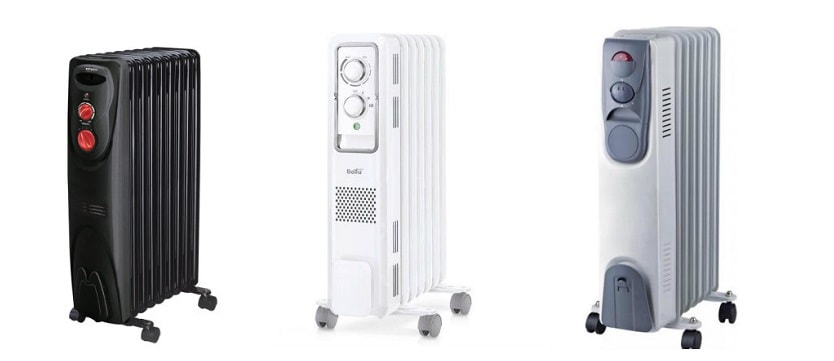
These heaters are great for heating small spaces. The oil cooler is a small battery filled with special mineral oil. Also, one or several heating elements are located inside with the help of which heating occurs. Outwardly, they are similar to traditional cast iron batteries, consisting of several sections. The more there are, the more heat the heater can provide.
Some oil coolers are equipped with built-in fans. They disperse warm air around the room, and heating is faster.
Sometimes you can find oil radiators of a slightly different design. They are single or double sealed oil filled panels. The surface area of such a device is lower compared to "batteries". This means that it will warm up the room much longer. However, at the same time, it takes up much less space and can be used in small spaces.
Like all heating devices, oil batteries have both advantages and disadvantages. The first include the following:
- Most heaters are equipped with a thermostat. It allows you not to "burn" electricity for nothing, but to set the air temperature in the room, upon reaching which the device will turn off on its own.
- Many models are equipped with a timer. Thus, you can program the heater to turn on at a specific time.
- Quite a democratic cost.
- Compactness and mobility. Most of the models are equipped with special feet and casters. With their help, you can place the device in any convenient place.
- The heated oil takes a long time to cool. So the heater will give off heat for a long time after it is disconnected from the network.
- Fanless models run completely silent.
There are also many disadvantages of oil heating radiators. The main one is that the surface of the battery gets very hot. So it shouldn't be placed in rooms where small children are present. An oil heater weighs a lot. In addition, it takes a long time to reach operating temperature. So if you want to quickly warm up the room, this option will not work. Well, the main drawback: oil heaters cannot be called economical.They consume a lot of energy.
![]() See also - Rating of the best oil heaters according to user reviews
See also - Rating of the best oil heaters according to user reviews
Convection heaters
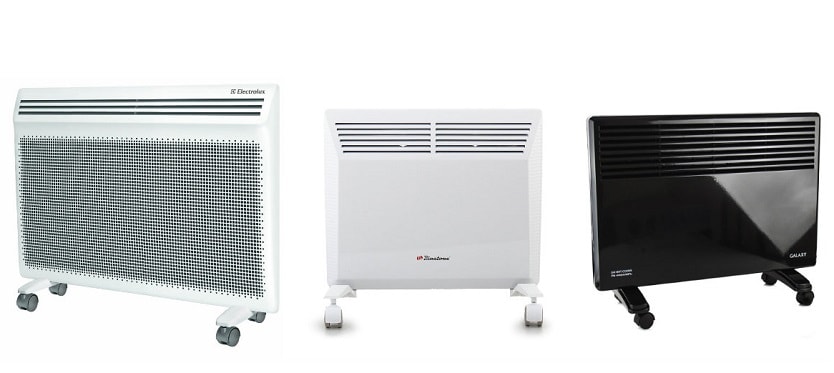
The device of such a device is subject to the laws of physics and is based on the phenomenon of convection. Everyone knows that cold air is heavier than warm air, which means it is located closer to the floor. It gets through the lower grill of the heater to the powerful heating elements, heats up and naturally rises to the ceiling. Meanwhile, the process is repeated from the beginning.
Depending on the type of fastening, convectors can be divided into 4 main categories:
- Wall mounted. They have a nice design and can serve as an additional decoration for the interior. Most often they are placed under a window, like conventional batteries.
- Outdoor. They have additional legs or wheels, thanks to which they can easily move in any direction.
- Embedded. Differ in the complexity of installation. They are built into previously prepared niches in the floor and are used for additional heating of rooms with large panoramic windows.
- Ceiling. They are installed, like wall-mounted ones, only at the top, on the ceiling.
Depending on the type and source of heating, convection heaters are divided into the following types:
- Gas. They are often used to heat large industrial premises. They are rarely used in the residential sector.
- Aquatic. In some cases, additional equipment is required: pipelines and a hot water boiler.
- Electrical. The most popular option for houses and apartments. They do not require the installation of additional equipment and are easy to maintain and install.
Some convection heaters are equipped with additional fans. This promotes better air circulation and allows you to warm up the room well in a relatively short time.
The advantages of such devices include:
- Relative noiseless operation (if there is no additional fan).
- The presence of a built-in thermostat, which independently turns on and off the heaters at the right time.
- Overheating alarm relay.
- Relative safety. The surface temperature of the heater rarely exceeds 65 degrees. So getting burned is unlikely.
- Ease of use, especially for floor-standing models. You don't need to mount anything, just plug it in.
- They are quite economical and consume a quarter less energy compared to oil counterparts.
There are few disadvantages of such devices, but they are still there.
First, it is difficult to heat up very large rooms with their help. A portion of warm air will cool down before the next one heats up. So they are not suitable for rooms with high ceilings.
And secondly, the convection type of heaters is not suitable for people suffering from various forms of allergies. Constant air circulation creates drafts, which contributes to the active movement of dust particles and household mites around the room.
Infrared heating units

This is one of the most modern types of climate technology. Their principle of operation is based on the emission of infrared waves of various ranges. A good infrared heater can be compared to the bright sun warming us on a summer day. Inside the heaters there are special lamps made of quartz, carbon or halogen. Air is pumped out inside the tubes and there are tungsten or carbon fiber filaments. Behind the tubes is a mirrored or polished metal reflector. The front is covered with a mesh panel.
Unlike all other heating devices, infrared heaters do not heat the air, but the surrounding objects. They, in turn, transfer heat into space.
Like convection, these devices come in different mounting methods. They can be placed under the ceiling or hung on the wall. Or you can prefer a portable floor version.It is also good because it can be taken out, for example, on the veranda. Since the rays heat objects and scatter in the air, they are not afraid of any drafts or wind. Thus, it is the only device that can effectively keep you warm in open areas.
Advantages of infrared heating devices:
- Very economical consumption of electrical energy.
- Perfect noiseless operation.
- They can work without moving air in space, which means they are ideal for allergy sufferers.
- When you turn on the heater, it will get warm in just a few seconds. You don't have to wait for the room to warm up completely.
- The territory is warming up simultaneously in all directions. It all depends only on where the rays are directed.
Disadvantages of devices:
- Care should be taken when choosing a powerful shortwave device. If the calculations are not correct, headaches may occur. They should never be used in rooms with low ceilings. They are mainly intended for outdoor use.
- High-quality infrared heaters have a higher cost compared to other types of climatic technology.
![]() See also - Infrared heaters are harmful or not
See also - Infrared heaters are harmful or not
Fan heaters
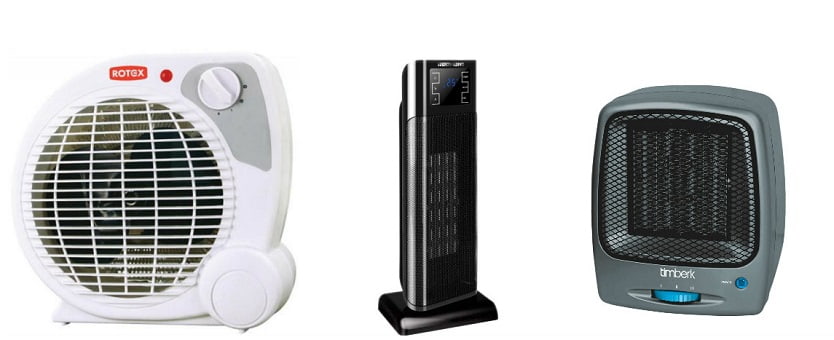
Traditional heat fans are considered to be the most affordable and easy to operate. They are installed on a table or on the floor and are able to provide a fairly rapid heating of air in a room.
The variety of such heaters is small. It all depends on what kind of heating element is installed inside. They can be like this:
- Open coil - heating temperature about 700-800 degrees.
- Tubular heater - heating more than 200-250 degrees.
- Ceramic plate - no more than 190 degrees.
Devices with an open spiral, of course, warm up the room faster, but they burn oxygen and pollute the room with the products of combustion of dust and other small particles. In this case, it is best to prefer the model with a ceramic plate. The heat from it will be the same, but the smell is much less.
To quickly warm up the room, many models are equipped with an additional rotary device. In this case, they are able to spread warm air 180 around them.
For all its positive qualities, fan heaters hum quite strongly, so that with long work they can cause headaches.
![]() See also - How to connect a thermostat to an infrared heater
See also - How to connect a thermostat to an infrared heater
What are the parameters to choose?
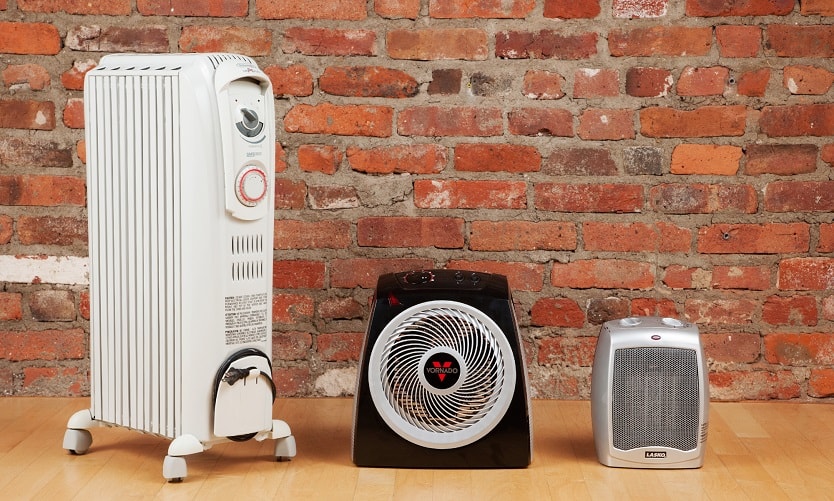
So which heater to buy for your home, office or summer cottage? Which type to give preference to?
Regardless of which option you prefer, you should first decide on some basic parameters. Perhaps their definition will help make the right choice.
Accommodation
Floor heaters are the most popular. This design allows you to move the device to a convenient place or hide it in the pantry until next time.
Stationary wall or ceiling installation is necessary when the device is to be used continuously. In this case, the inclusion will be done with one click, and the wires will not get tangled under your feet.
Power
In general, this parameter is selected at the rate of 0.1 kW per 1 square meter of the room. That is, 1.5 kW is enough to heat a room with an area of 15 m2.
The presence of a thermostat
The presence of this device allows you to maintain the set temperature automatically. There are electronic and mechanical thermostats. The first sets the parameters more accurately, but can be damaged by accidental power surges in the network. The second is much more durable, but its accuracy rarely exceeds 2 degrees.
In order not to damage the electronic thermostat, it is necessary to install an additional protection system against voltage surges.
Additional functions
Many models of climatic technology have additional options designed to provide the desired degree of comfort and safety. These include:
- waterproof housing;
- protection against overheating or freezing;
- various timers;
- rollover shutdown;
- ionizers or humidifiers.
By themselves, they should not be a decisive criterion for choosing, but they can tip the scales on one side or the other, all other things being equal.
Which one is better to choose?
Choosing a home heater is not easy. It is rather difficult to give advice on this matter. It all depends on what kind of room should be heated and how quickly it should be done.
For example, a fan heater with a ceramic plate is suitable for installation in a nursery. All other options should be used exclusively under parental supervision or placed under the ceiling.
For the bedroom, it is best not to use models that have a built-in fan. Their noise will be annoying during sleep. In this case, an oil cooler or a conventional electric convector is best suited.
If you come to the cottage for a short time and want to quickly feel comfortable, a portable infrared model is the best fit. With him you will be quite comfortable both in the house and in the yard.
In general, if you correctly determine exactly where and how often the device will be used, then the answer to the question of which heater to choose for the house for the cold season will be found by itself.
See also:
- 5 Best Digital Weather Stations for Home of 2019
- 5 best electric fireplaces and hearths according to customer reviews
- 9 best electric fireplaces and hearths Electrolux according to customer reviews
- 9 best heaters RESANT according to customer reviews
- 10 best Electrolux heaters of 2019

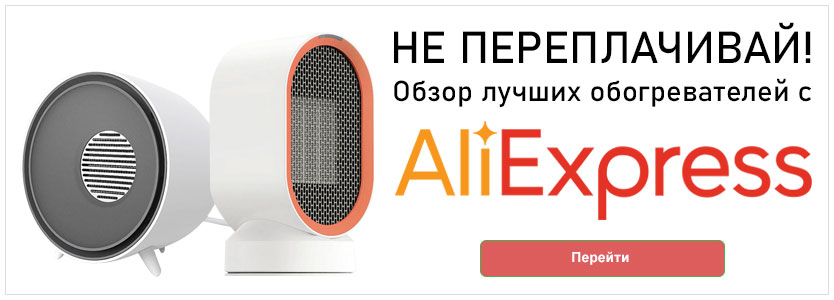
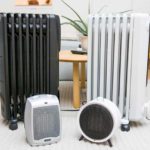
Good article